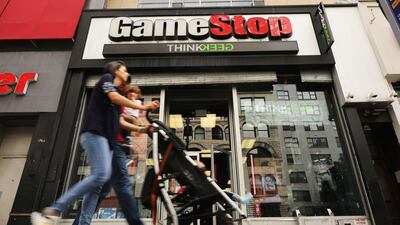US retailers shut more stores in the first half of 2019 than in previous years as they face bankruptcies, trade tariffs and online competition with more pain ahead for brick-and-mortar businesses.
Retailers shut 7,000 stores in the first six months of the year, exceeding the total store closures of about 6,000 in 2018, according to accountancy and business advisory firm BDO. Closures are expected to double in 2019. Weak holiday sales in 2018, impact of tax reforms, the US government historic shutdown in January and poor weather forced physical retailers out of business.
"The pace of retail bankruptcies in 2019 to date is accelerated compared to what we observed in late 2018," the firm said in its bi-annual report. "In the first half of the year, most retail bankruptcy filings resulted in an asset sale and/or liquidation."
The industry has taken a hit from a year-long trade war between the US and China that has sparked concerns for slowing global economic growth. The Trump administration has slapped a 15 per cent on Chinese consumer goods such as televisions, apparel, bed linens, smart watches and footwear, triggering concerns retail sales could shrink.
Most closures were apparel specialty stores, followed by footwear and general merchandise stores.
Clothing stores accounted for about 36 per cent of total store closures in the first half of 2019, up from 14 per cent in 2018 overall, according to Coresight Research. Footwear retailers accounted for about 28 per cent of closures, compared to 8 per cent last year, and general merchandise stores comprised approximately 14 per cent of closures, an increase from 2 per cent in all of 2018.
Most of the store shutdowns were due to bankruptcy filings as retailers grappled with too much debt, over-expansion, private equity pressures and the fast pace of industry changes, the report said.
The decline in physical stores came as consumer spending decreased during the spring after a cut in tax refunds in 2019, forcing retailers to offer deep discounts to move merchandise.
Simultaneously, US tariffs on Chinese goods forced some retailers to increase prices to maintain profit margins, which then hurt retail sales.
The US National Bureau of Economic Research estimates that higher tariffs will add an annual cost of $831 (Dh3052) on the average US household. A lower income will likely reduce the budget for spending on retail items.
The strain on retailers during the first half became clear as US companies cut 42,000 jobs, most of them in the retail sector.
In response to all these pressures, many retailers are dropping their traditional flagship stores and opting instead for smaller-sized outlets in major urban areas, BDO said.
"Flagship stores no longer generate the volume of sales needed to justify the cost," the report said, "Through their closures, retailers hope to offer an omnichannel brand experience while reducing the effect of onerous leases."
Coresight Research estimates a total of 12,000 store closures during 2019, most of which will result from retailers going out of business or reducing their physical footprint.
Despite the bankruptcy filings and store shutdowns, retail sales have "remained solid" in the first half of the year due to a strong US economy, record low unemployment and rising wages, but BDO warns the outlook is still challenging.
"While positive economic factors lead us to believe that the risk of a significant downturn in the retail sector is slim for the remainder of 2019, retailers should remain cautious heading into 2020," it said.
Any additional trade tariffs are likely to "have an adverse impact" on the US economy and retail sales while consumer debt has hit record levels.
The rising consumer debt burden could lead to reduced spending that would pressure distressed retailers in the second half of the year and into 2020, BDO said.
Looking ahead through the end of 2019, BDO expects additional bankruptcy filings—but at a slower pace than the first half of the year—and the heightened rate of store closures to continue.


